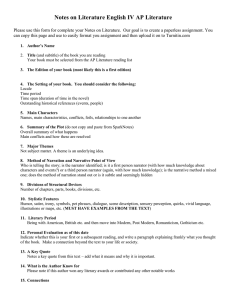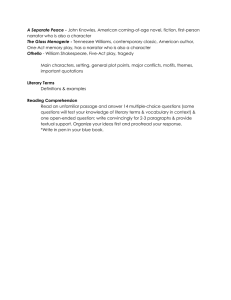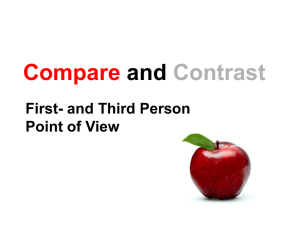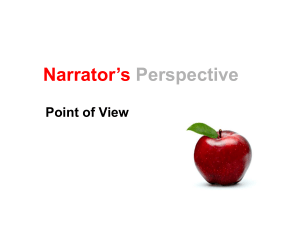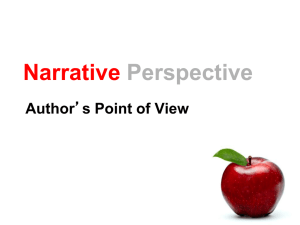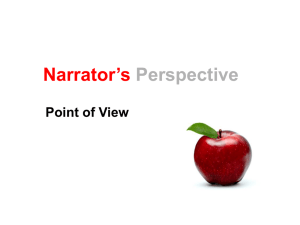Taking a Closer Look at Point of View
advertisement
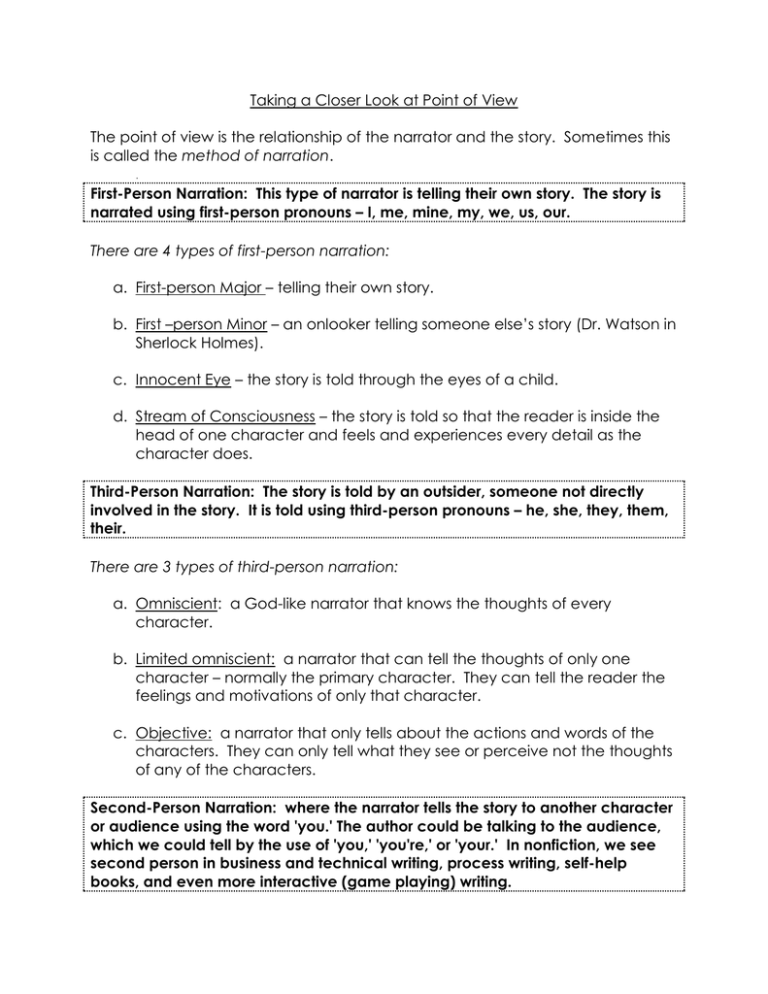
Taking a Closer Look at Point of View The point of view is the relationship of the narrator and the story. Sometimes this is called the method of narration. First-Person Narration: This type of narrator is telling their own story. The story is narrated using first-person pronouns – I, me, mine, my, we, us, our. There are 4 types of first-person narration: a. First-person Major – telling their own story. b. First –person Minor – an onlooker telling someone else’s story (Dr. Watson in Sherlock Holmes). c. Innocent Eye – the story is told through the eyes of a child. d. Stream of Consciousness – the story is told so that the reader is inside the head of one character and feels and experiences every detail as the character does. Third-Person Narration: The story is told by an outsider, someone not directly involved in the story. It is told using third-person pronouns – he, she, they, them, their. There are 3 types of third-person narration: a. Omniscient: a God-like narrator that knows the thoughts of every character. b. Limited omniscient: a narrator that can tell the thoughts of only one character – normally the primary character. They can tell the reader the feelings and motivations of only that character. c. Objective: a narrator that only tells about the actions and words of the characters. They can only tell what they see or perceive not the thoughts of any of the characters. Second-Person Narration: where the narrator tells the story to another character or audience using the word 'you.' The author could be talking to the audience, which we could tell by the use of 'you,' 'you're,' or 'your.' In nonfiction, we see second person in business and technical writing, process writing, self-help books, and even more interactive (game playing) writing.
